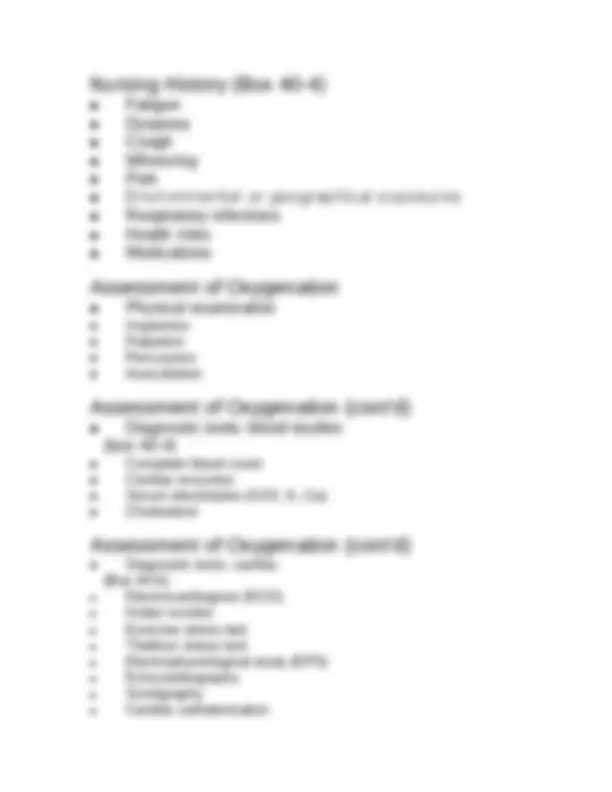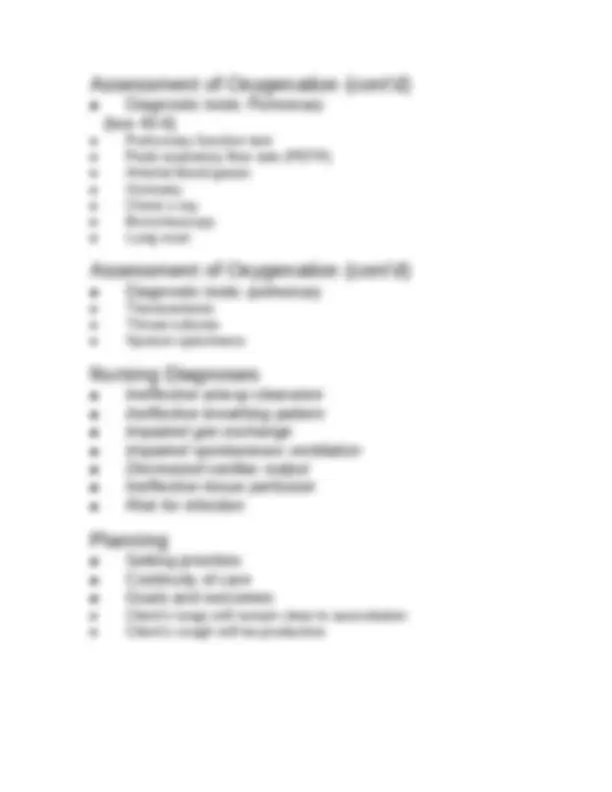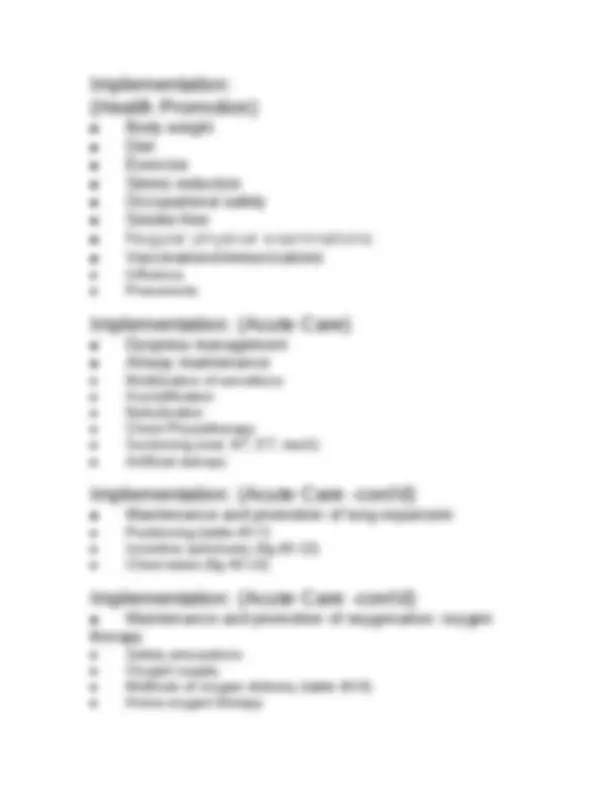





Study with the several resources on Docsity

Earn points by helping other students or get them with a premium plan


Prepare for your exams
Study with the several resources on Docsity

Earn points to download
Earn points by helping other students or get them with a premium plan
Community
Ask the community for help and clear up your study doubts
Discover the best universities in your country according to Docsity users
Free resources
Download our free guides on studying techniques, anxiety management strategies, and thesis advice from Docsity tutors
oxygenation Material Type: Notes; Class: FOUNDATIONS NURSING PRACT; Subject: Nursing; University: Southeastern Louisiana University;
Typology: Study notes
1 / 6

This page cannot be seen from the preview
Don't miss anything!




Myocardial pump Myocardial blood flow Coronary artery circulation Systemic circulation Blood flow regulation: cardiac output, preload, afterload, contractility Conduction system
Breathing: inspiration, expiration Lung volumes and capacities Pulmonary circulation Respiratory gas exchange: oxygen, carbon dioxide Regulation of respiration (Box 40-1: Physiological Processes of Oxygenation)
Decreased oxygen-carrying capacity Decreased inspired oxygen concentration Hypovolemia Increased metabolic rate
Conditions affecting chest wall movement Musculoskeletal abnormalities Pregnancy Obesity Trauma Neuromuscular diseases Central nervous system alterations Chronic disease
Alterations in Cardiac Functioning
Developmental Factors
Lifestyle Factors
Environmental Factors
Assessment of Oxygenation (cont'd)
Pulmonary function test Peak expiratory flow rate (PEFR) Arterial blood gases Oximetry Chest x-ray Bronchoscopy Lung scan Assessment of Oxygenation (cont'd)
Thoracentesis Throat cultures Sputum specimens Nursing Diagnoses
Planning
Client’s lungs will remain clear to auscultation Client’s cough will be productive
Implementation: (Health Promotion)
Influenza Pneumonia Implementation: (Acute Care)
Mobilization of secretions Humidification Nebulization Chest Physiotherapy Suctioning (oral, NT, ET, trach) Artificial airways Implementation: (Acute Care -cont'd)
Positioning (table 40-7) Incentive spirometry (fig 40-13) Chest tubes (fig 40-14) Implementation: (Acute Care -cont'd)
Safety precautions Oxygen supply Methods of oxygen delivery (table 40-8) Home oxygen therapy